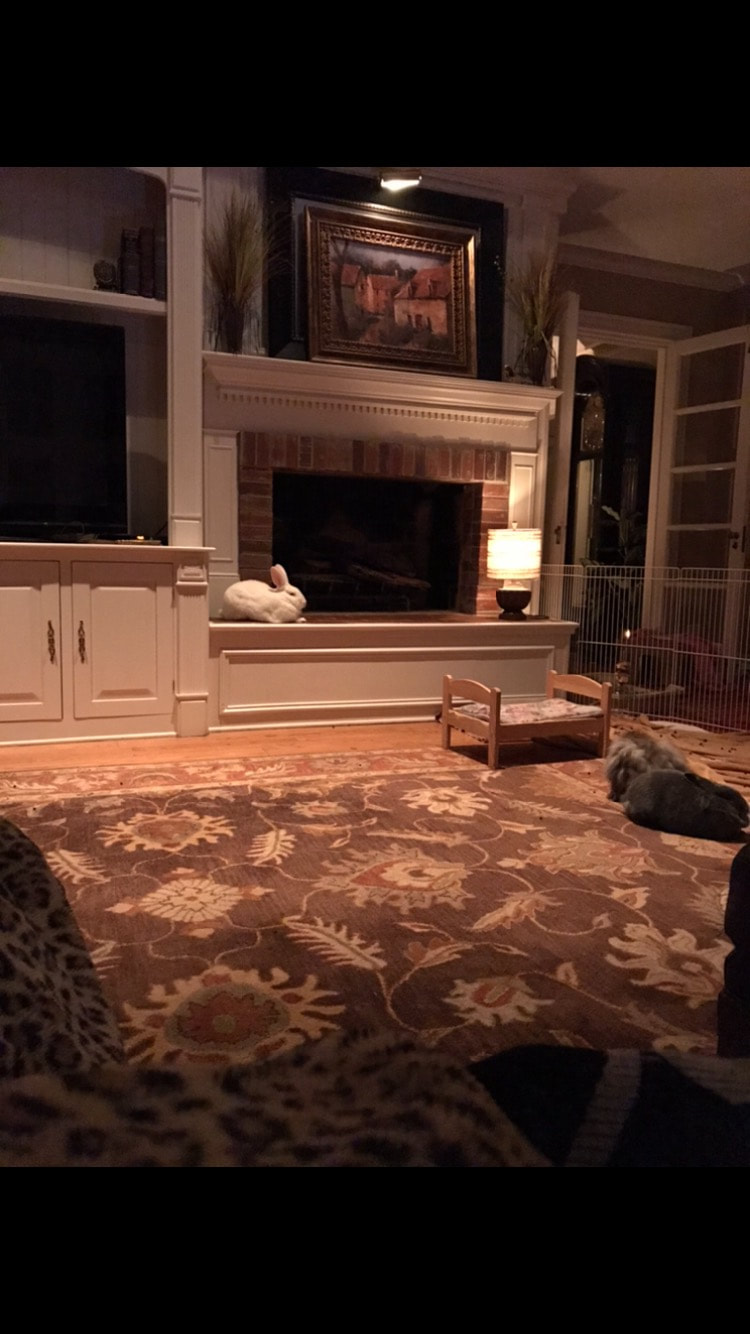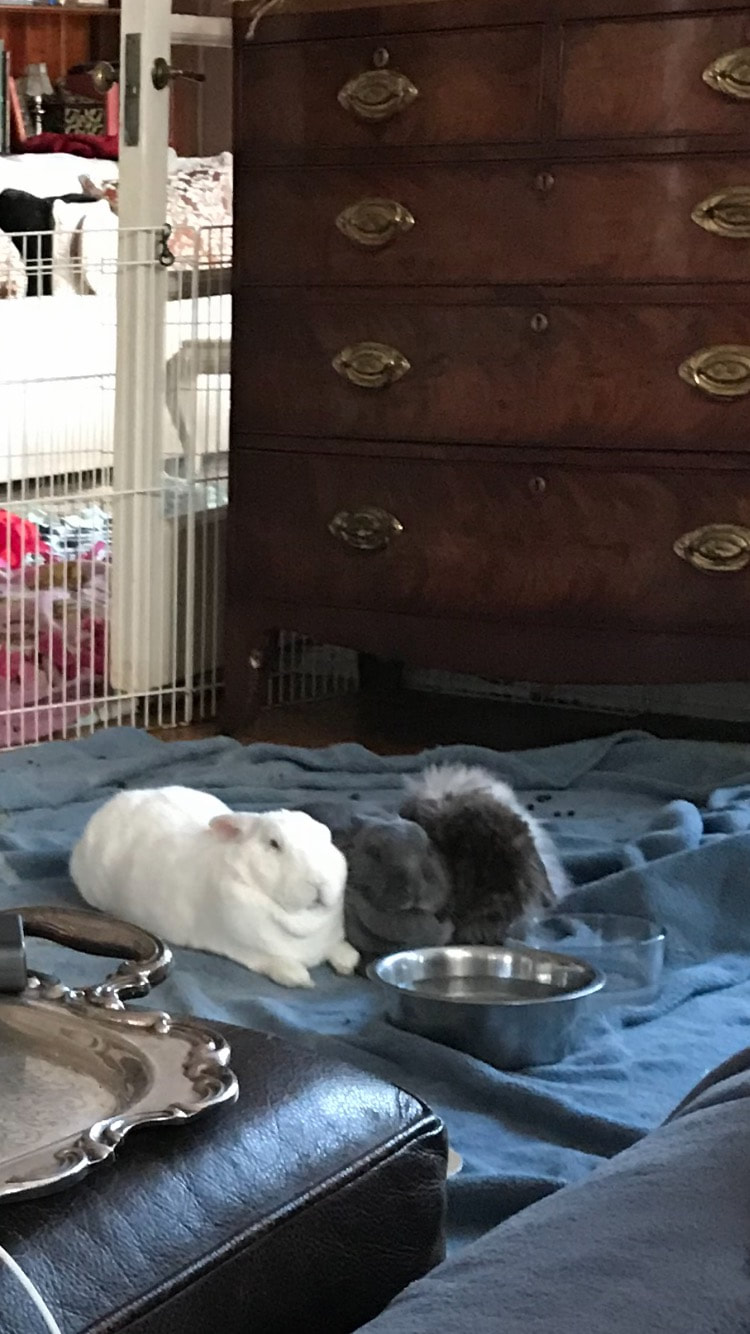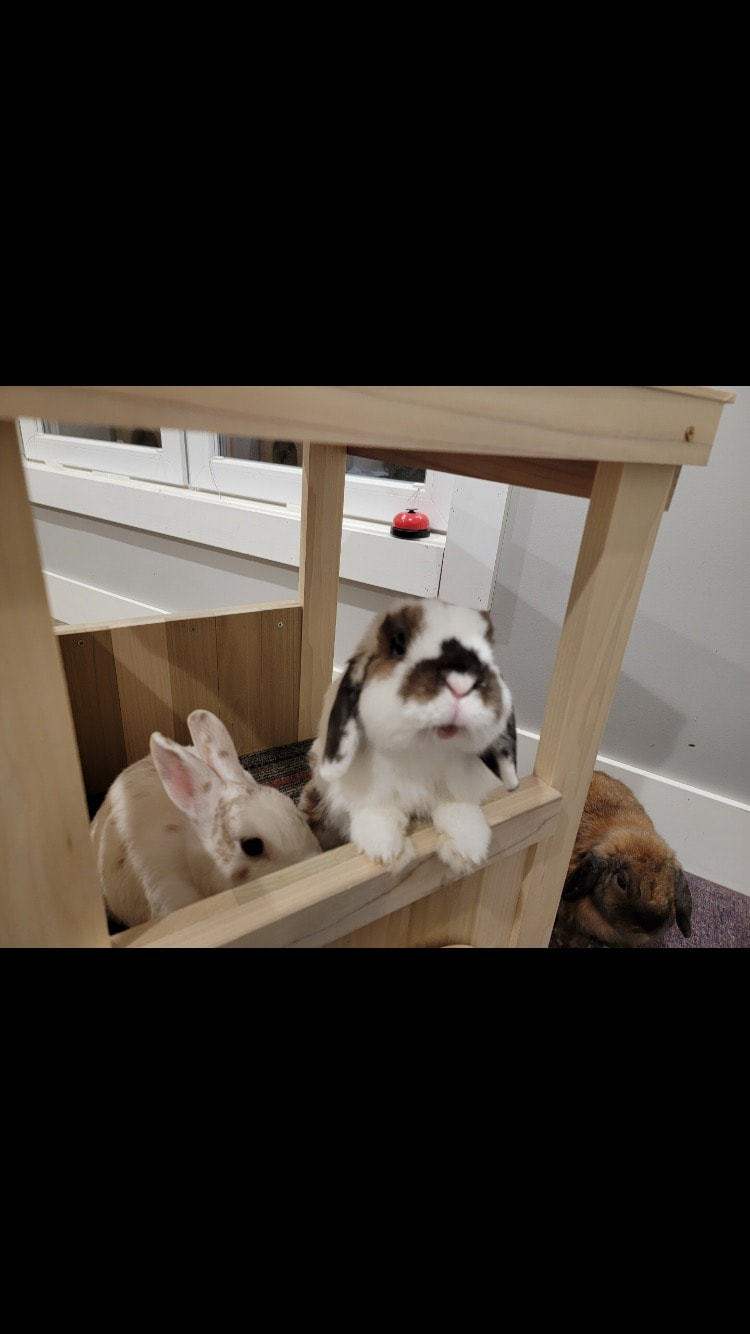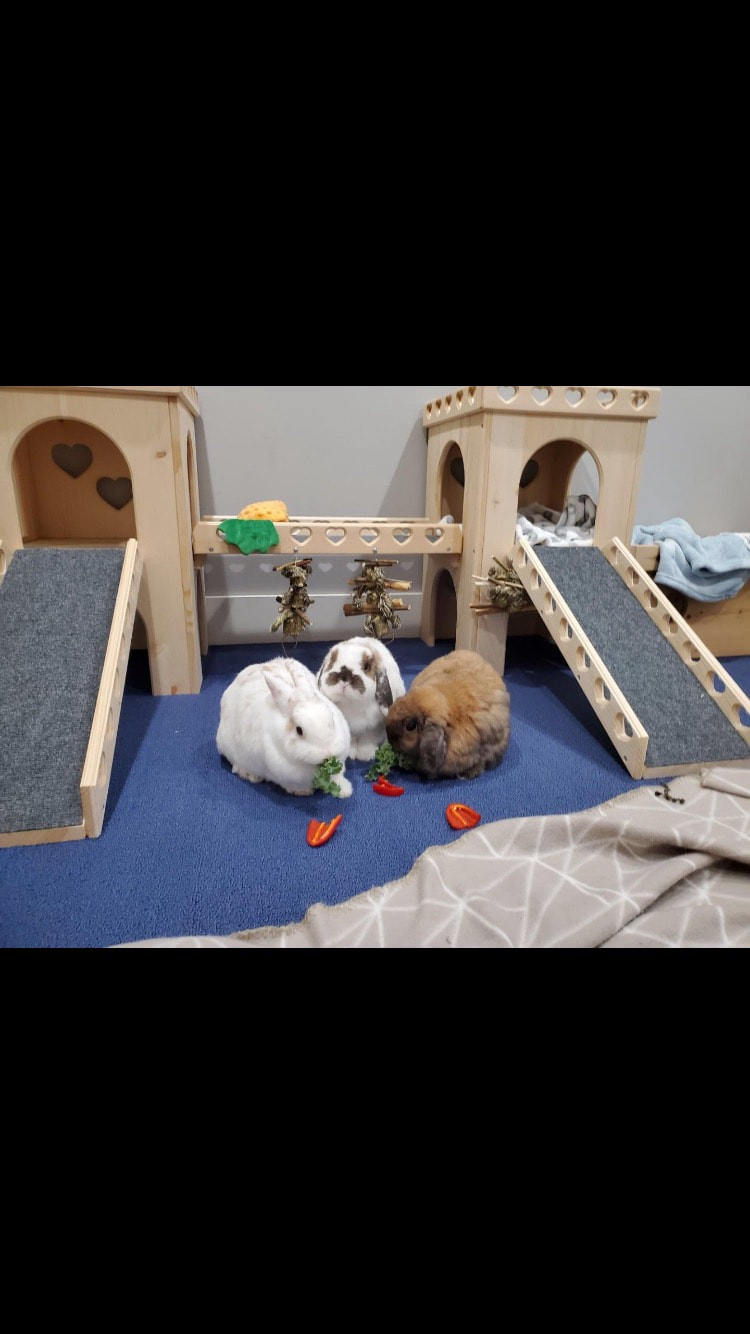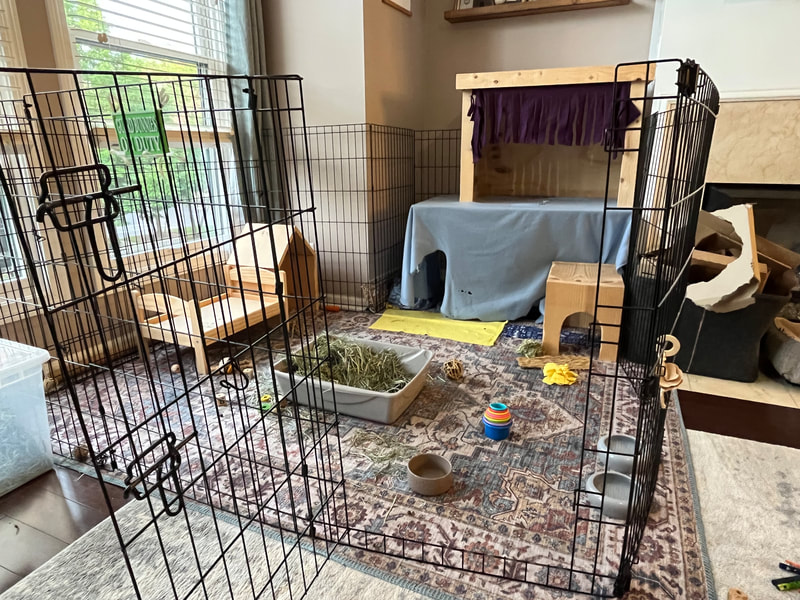"Home-Bunnies"
Domestic bunnies (house buns) should be kept indoors. If you would like to bring your bunny outside, be sure the visit to the great outdoors is closely supervised. If you choose to take your bunny outside, keep track of whether RHDV2 (Rabbit Hemorrhagic Disease) is present in your area. You will also need to consider treating your bun with Revolution to prevent your bunny getting fleas and mites!!! Yuck!! Bunnies really need to be part of the family. When not at home, your bunny needs to be kept in either a puppy pen or even better a room of the house that has been bunny proofed!
In any space your rabbit is going to be, it is very important to "bunny-proof" the space. Rabbits are very mischievous and like to explore- even where you wouldn't expect them to! There are three general set-up that we see most often:
In any space your rabbit is going to be, it is very important to "bunny-proof" the space. Rabbits are very mischievous and like to explore- even where you wouldn't expect them to! There are three general set-up that we see most often:
- X-pen setup. Keeping your rabbits in a puppy playpen (X-pen) enclosure can be a safe way to keep your rabbits out of trouble. The more space you can enclose for the rabbit, the better. However, you should provide a minimum of a 4'x4' space for your rabbit. The smaller the X-pen, the more time the rabbit will need outside the pen for exercise. If the bunny is kept in a pen, she will need a minimum of 4 hours of playtime outside the pen. (See last picture below)
- Bunny Room. Giving your rabbit free roam of a room of the house is a good way to provide lots of space without having to bunny-proof your entire home. This would look like taking a room (like a bedroom) of your house and setting up the entire room for the bunny to free roam. (See first picture below)
- Free Roam. When a rabbit has free roam of the house, that means that he or she can go wherever, all day long. This is similar to how cats and dogs are kept. This requires the most bunny-proofing, but also gives your rabbit the most space. (See second picture below)
LITTER
We use wood stove pellets for litter. We buy them from Menards and usually cost $4.99/40 lb. bag. They can be found near the fireplaces. They are very absorbent and cost effective. Other safe options are paper litters (bedding or pelleted, like Carefresh) or newspaper. We like the cat litterboxes from Walmart. They are under $5 and are very roomy for your bun’s bun!!! Because bunnies like to poop where they eat, place a good handful of hay at one end of the litterbox.
HABITAT SETUPS
In whatever setup you provide for your rabbit, they must have the following:
We use wood stove pellets for litter. We buy them from Menards and usually cost $4.99/40 lb. bag. They can be found near the fireplaces. They are very absorbent and cost effective. Other safe options are paper litters (bedding or pelleted, like Carefresh) or newspaper. We like the cat litterboxes from Walmart. They are under $5 and are very roomy for your bun’s bun!!! Because bunnies like to poop where they eat, place a good handful of hay at one end of the litterbox.
HABITAT SETUPS
In whatever setup you provide for your rabbit, they must have the following:
- Water and food bowls
- Litter box (sometimes more than 1)
- Hidey holes (rabbits prefer hiding spots with more than one entrance/exit)
- Toys
- Soft flooring (fleece blankets, flat-weave rugs- make sure your rabbit is not eating it)
ABOUT US
Wonder Bunny Rabbit Rescue is a non profit, no-kill 501(c)3 organization dedicated to the rescue, care, and adoption of bunnies.
CONTACT
Phone: (708) 280-4301 / Email: wonderbunnyrescue@gmail.com
Wonder Bunny Rabbit Rescue is a non profit, no-kill 501(c)3 organization dedicated to the rescue, care, and adoption of bunnies.
CONTACT
Phone: (708) 280-4301 / Email: wonderbunnyrescue@gmail.com

